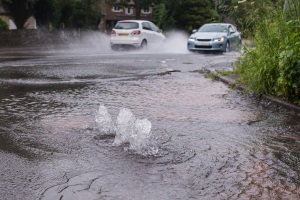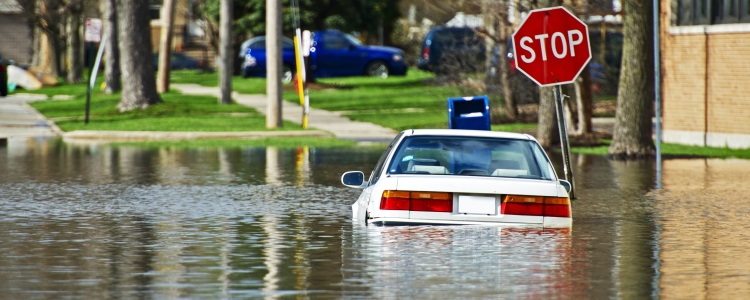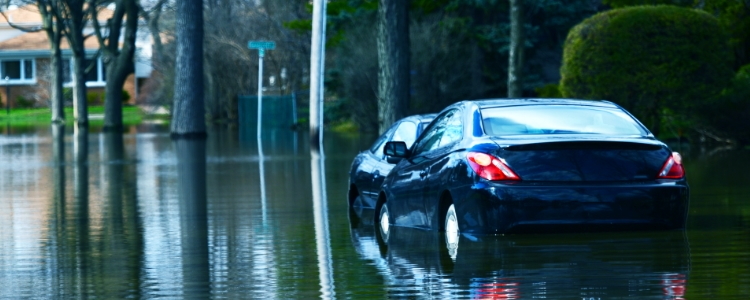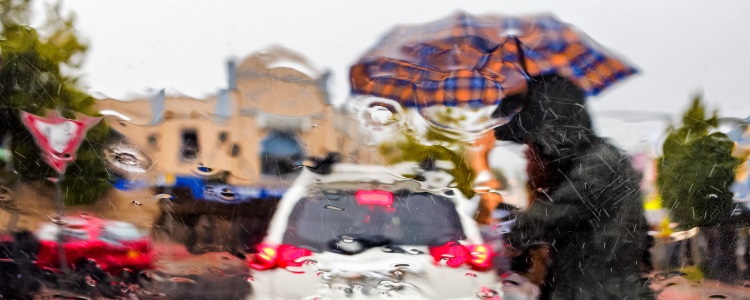According to Automobile Association, a UK-based insurance, car, home, and travel research site, it only takes about 12 inches of flowing water to move a vehicle, and 24 inches of standing water to float a car. Depending on where you live and the type of roads you travel, heavy rainfall can turn into flooding quickly. Do you know what to do if there’s flash flooding on the road and you’re caught driving in it?
Tips for When it Starts Flooding
When on the road, if you see any barricades you shouldn’t drive past them. That’s your first sign that the road is unsafe to drive on. Barricades are there to keep you safe, and if you ignore them you could cause serious damage to your vehicle. Beyond following the rules of the road, here are five basic driving tips to follow during heavy rain and flooding:
 Slow your speed down – Hydroplaning can occur even in the shallowest of water. You can prevent hydroplaning by slowing down.
Slow your speed down – Hydroplaning can occur even in the shallowest of water. You can prevent hydroplaning by slowing down.- Turn headlights and fog lights on – Heavy rain and driving over 35 miles per hour means limited visibility can occur. By law, you must use your headlights when visibility is reduced anywhere from 500 to 1,000 feet, depending on the state you live in. Using your fog lights is optional, but make sure you turn them off when the weather clears.
- Leave more space between cars – Make sure that you're leaving the proper amount of space between you and the vehicle in front of you. Depending on the severity of the weather, you may want to give yourself even more space. Anything can happen in bad weather conditions, and the more space you have, the less likely you are to be involved in an accident.
- Avoid standing water – If you can, avoid any standing water, especially if you aren’t sure how deep it is.
- Avoid moving flood water – Any water that’s moving or more than four inches deep can be a risk.
If you’re unable to avoid standing water, see how high it is, see if other vehicles are driving through it, and make sure you take your time driving through it. If no other cars are attempting to drive over it – or there aren’t any vehicles around – it’s best to turn around and find an alternative route. It's better to be safe than sorry.
Out of a Car Because of Flooding?
The bottom line is to go slow and be aware of your surroundings during any extreme weather conditions, such as flash flooding.
If you recently lost a vehicle due to water damage and are in need of a car, we want to help. At Auto Credit Express, we work with a nationwide network of special finance dealerships and want to help you find the right dealer in your area. Simply fill out our online auto loan request form today to get started.



















